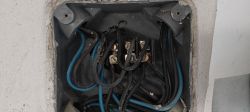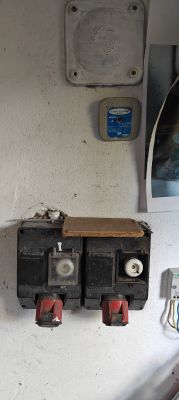And I have this question for you: I need to get the power out under the shed. And consequently, which wire to choose. As far as I can see, I have 4x wires from this box and I just don't know what thickness it is (photo). In addition, what socket needs to be connected to this force so that I can hook up a compressor, pressure washer. The protection I have is C20.
 .
.
From the top left corner, the wires come out of the switchboard. Whereas on the left bottom and right side down are the wires going to the power sockets. (Photo)
 .
.
 .
.
From the top left corner, the wires come out of the switchboard. Whereas on the left bottom and right side down are the wires going to the power sockets. (Photo)
 .
.
Moderated By krzysiek7:Separated from topic https://www.elektroda.pl/rtvforum/topic3875652.html


